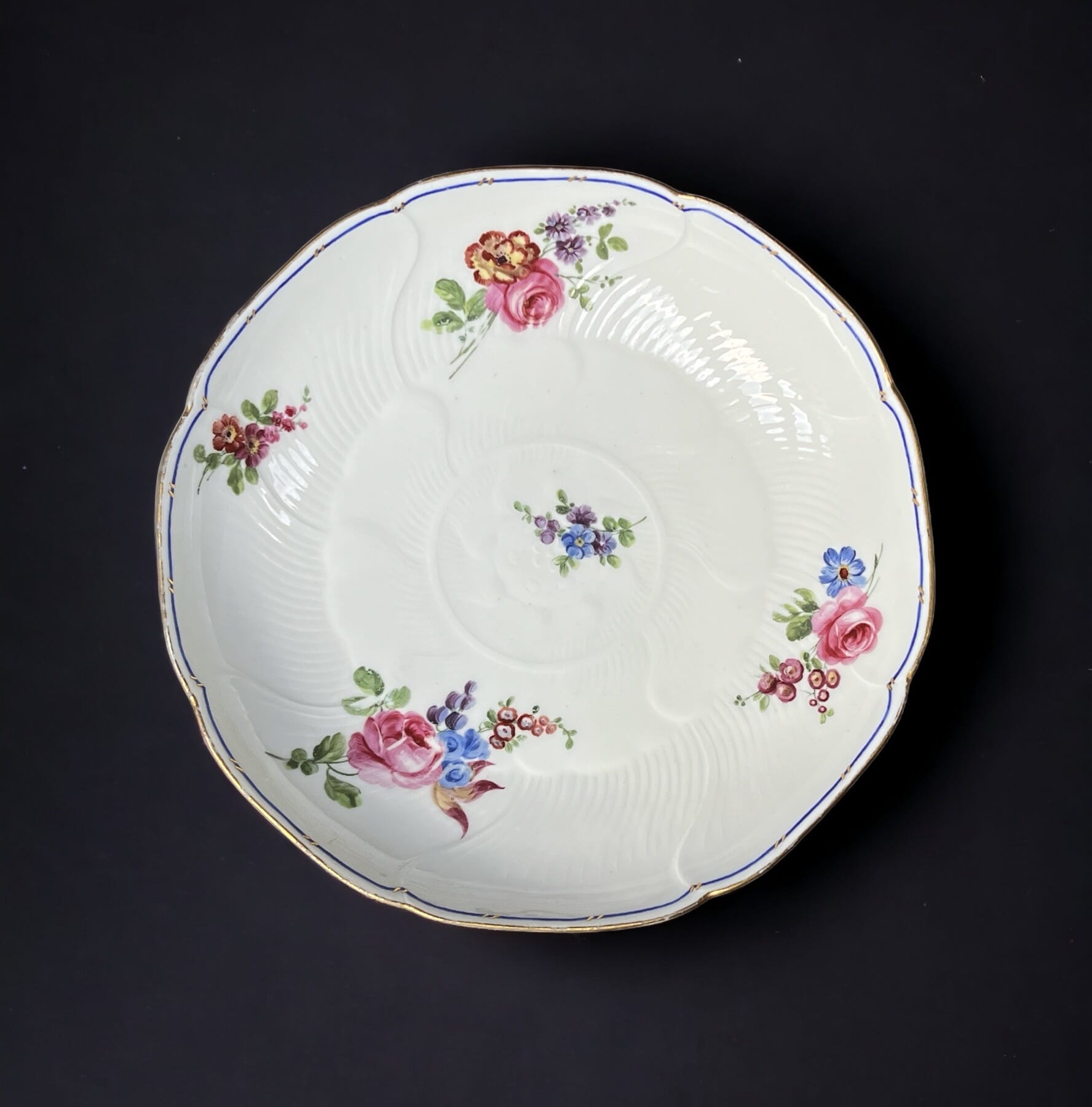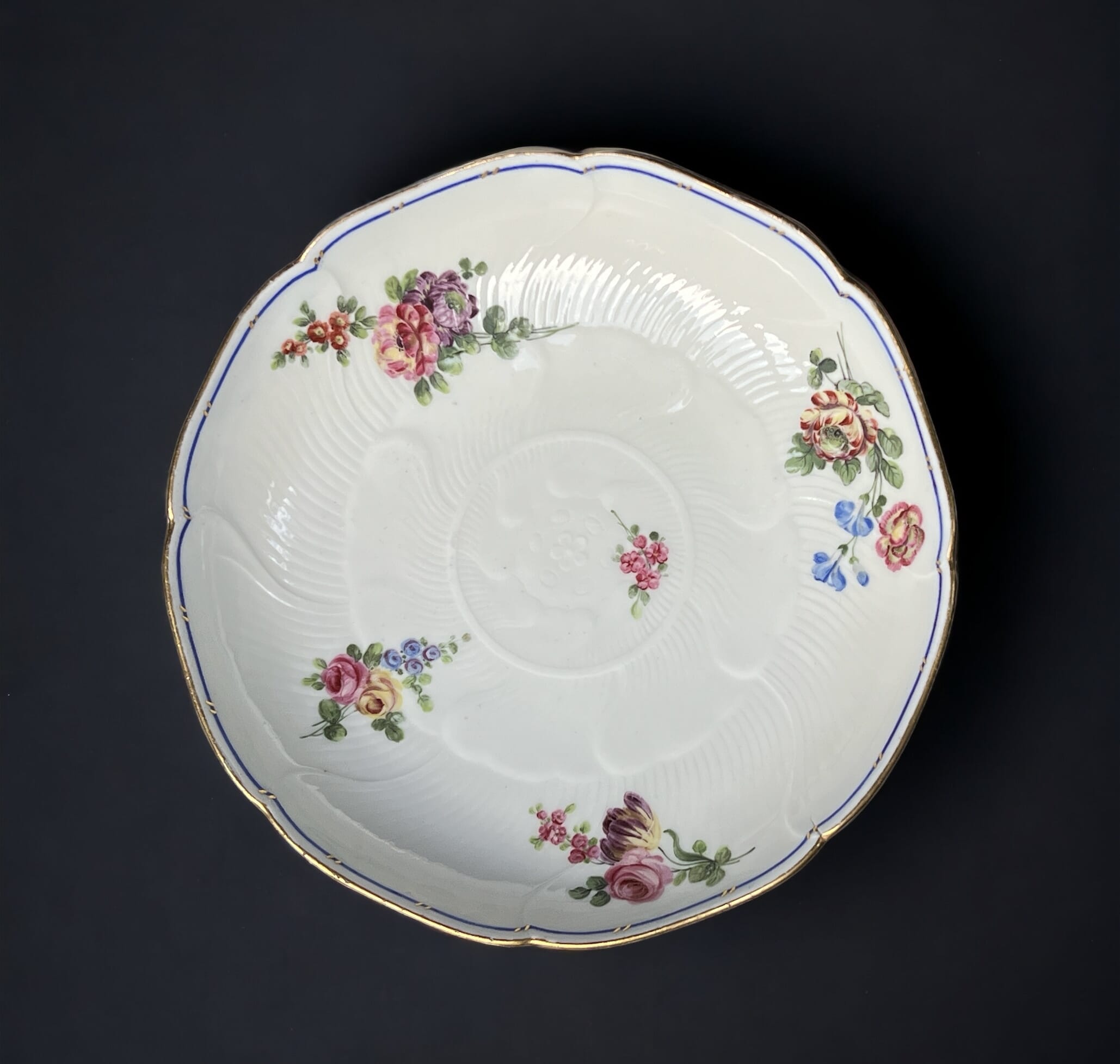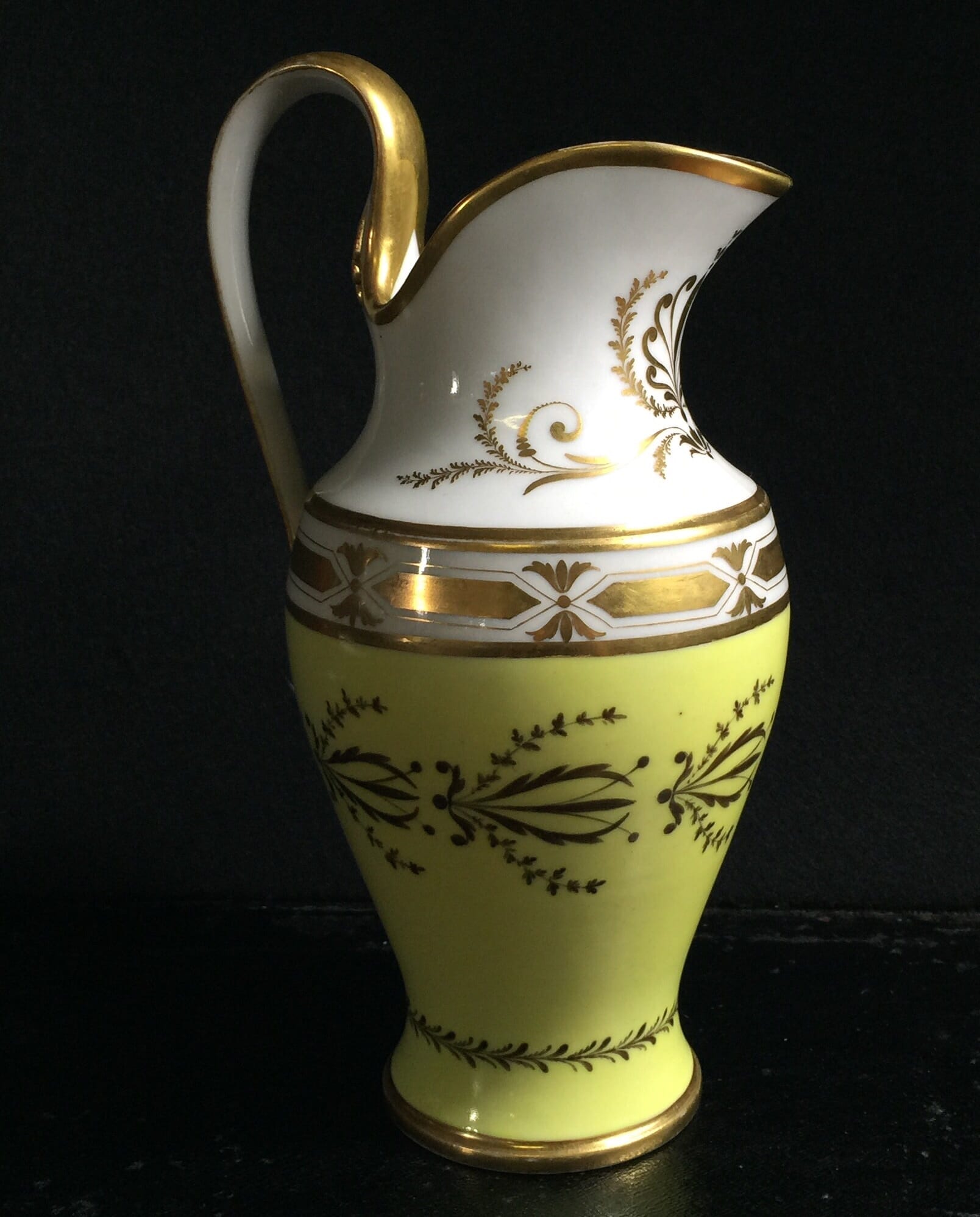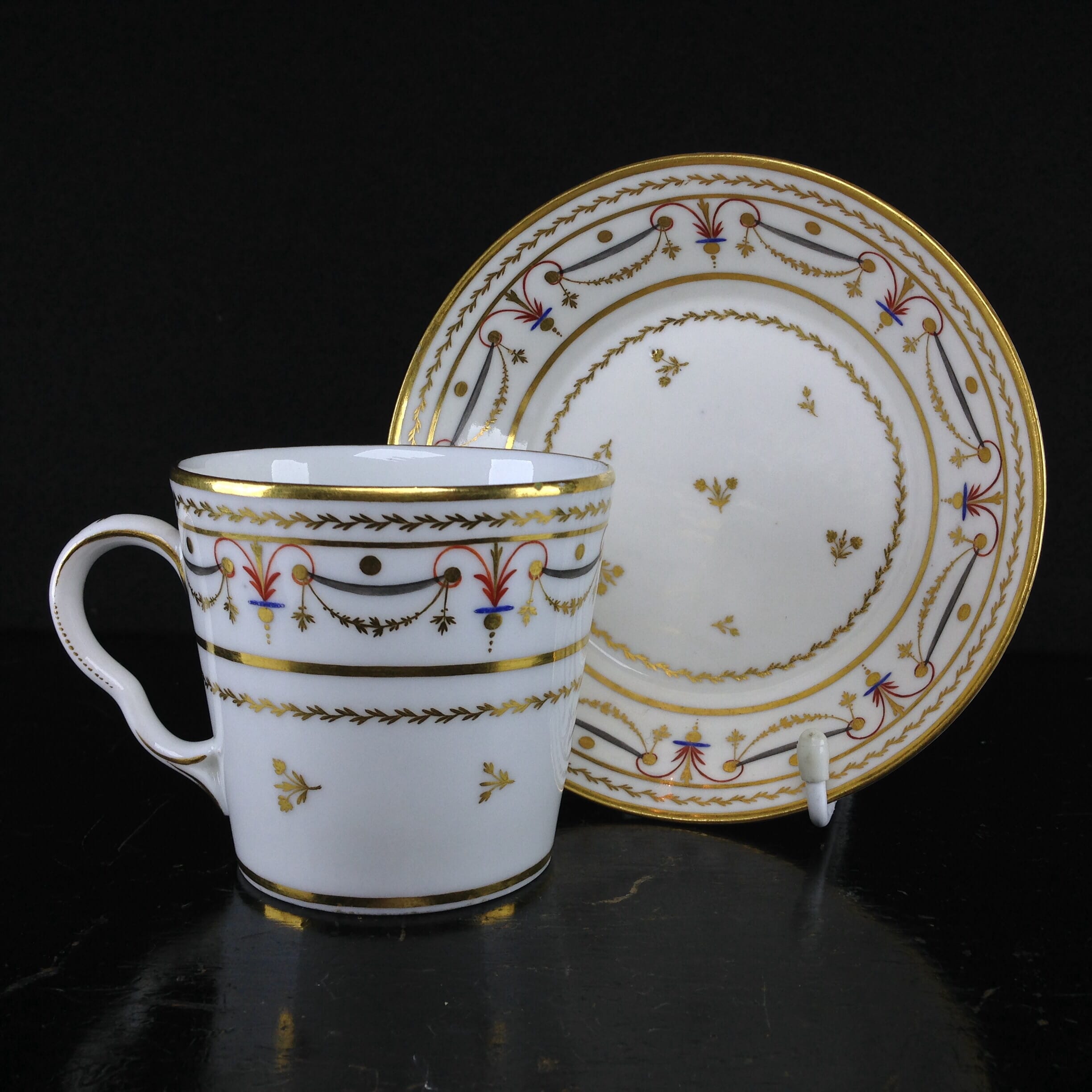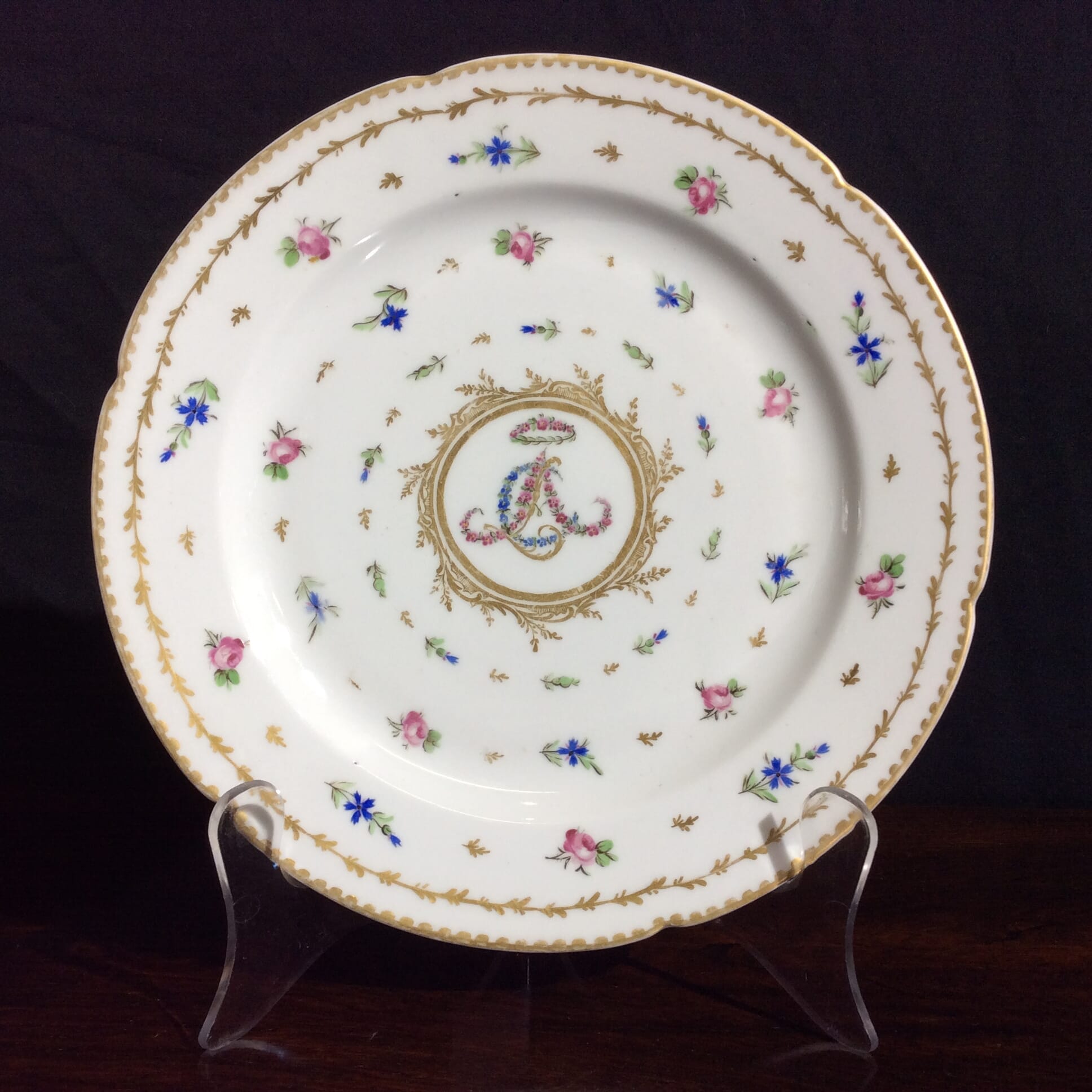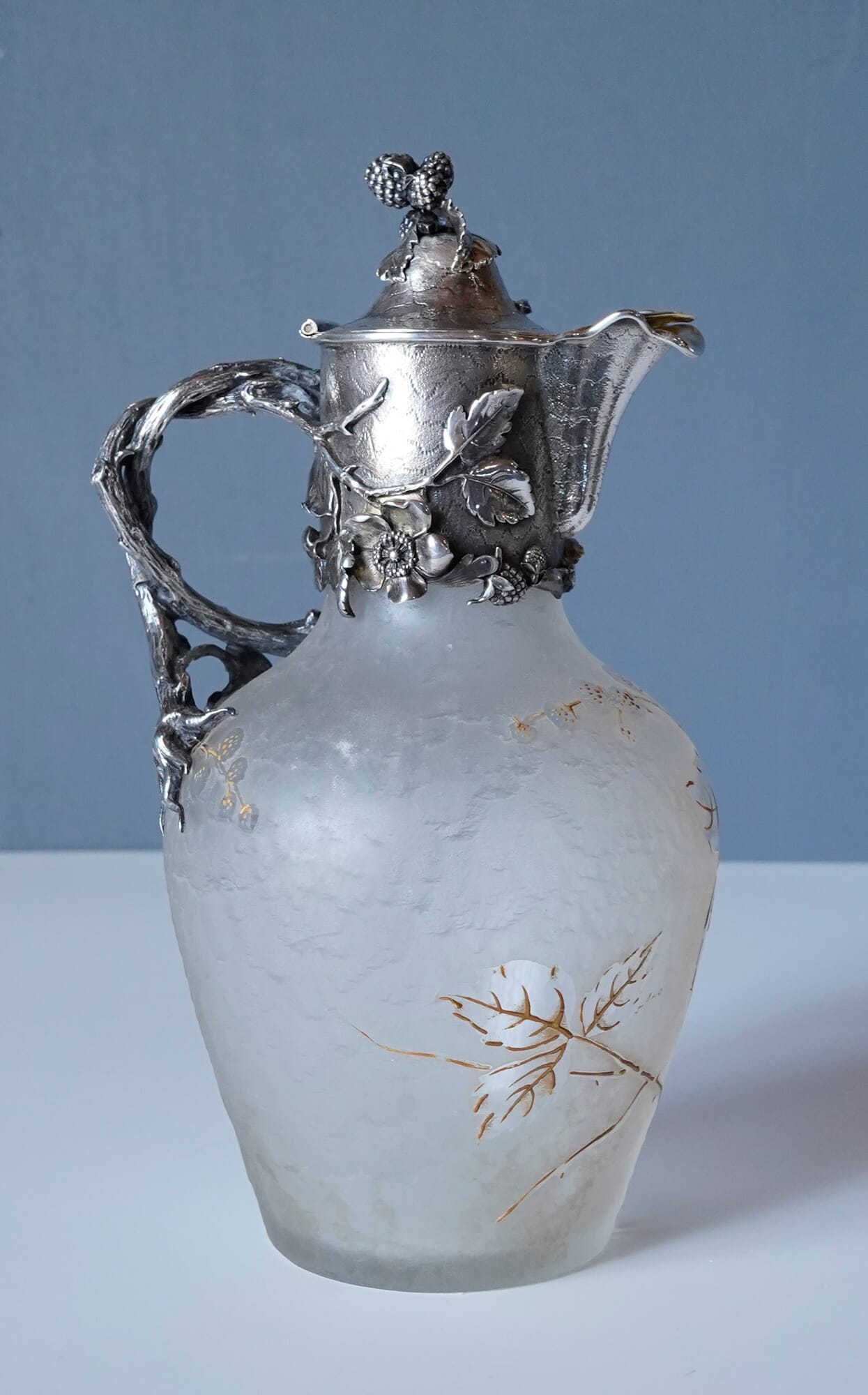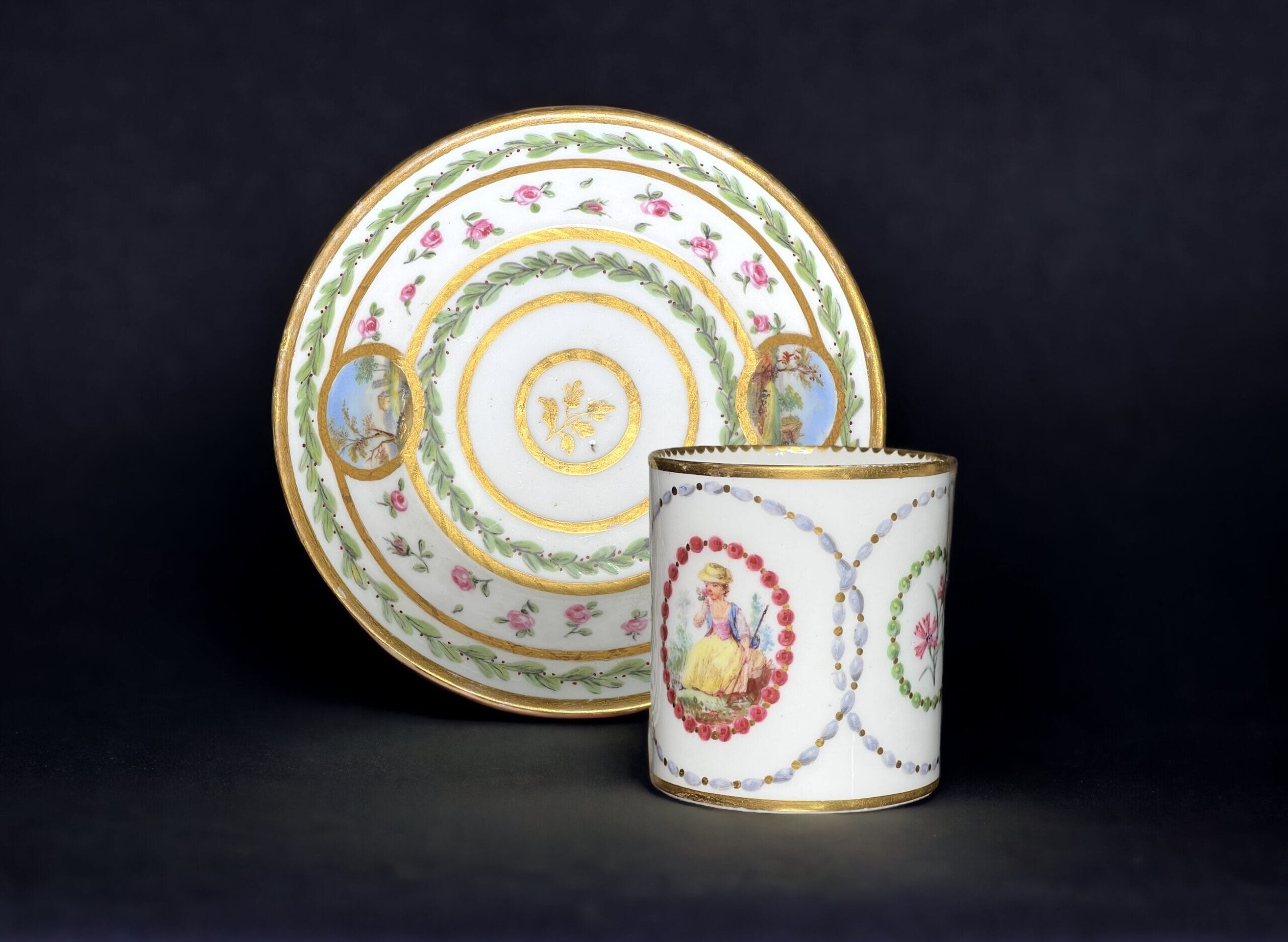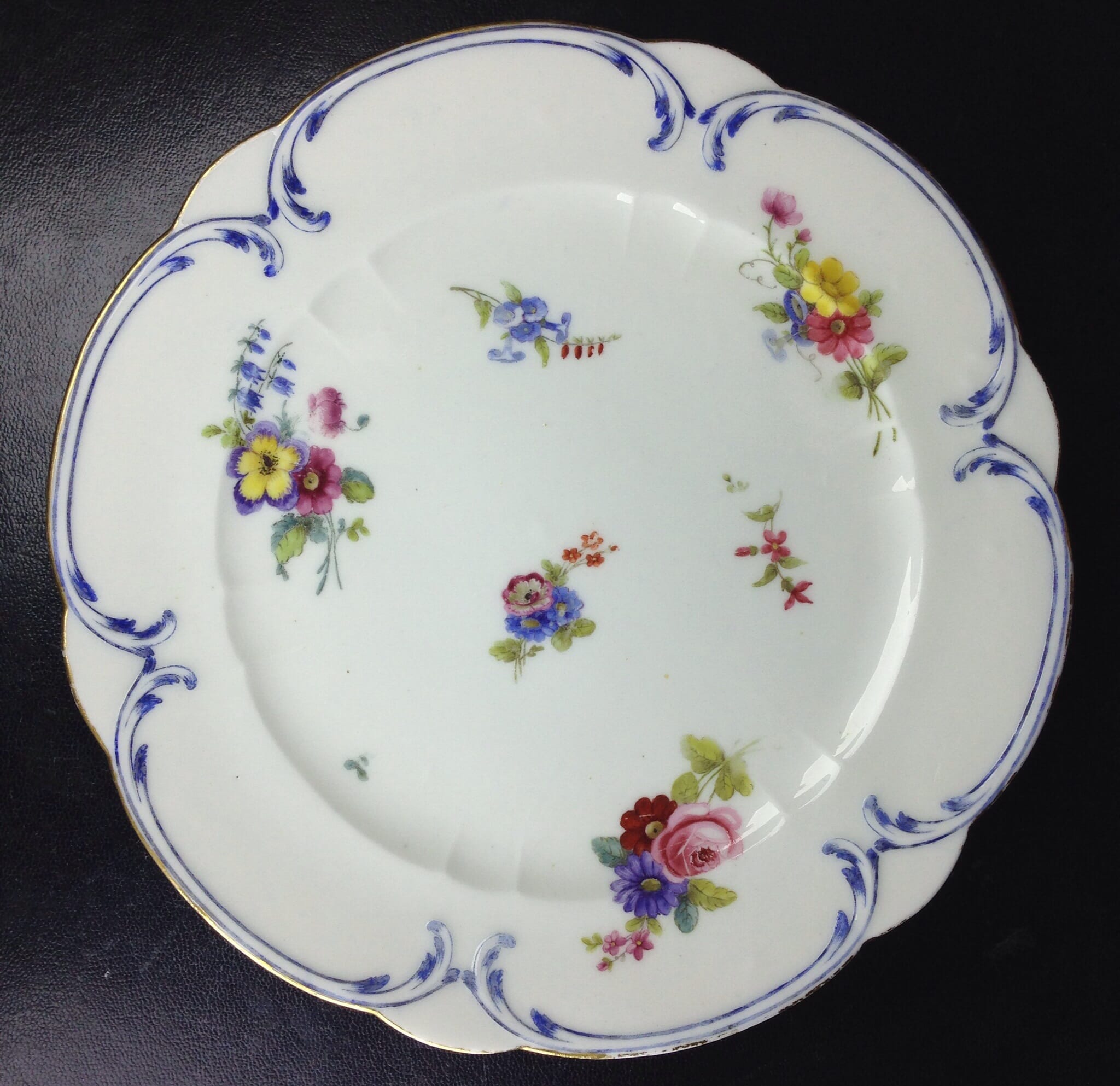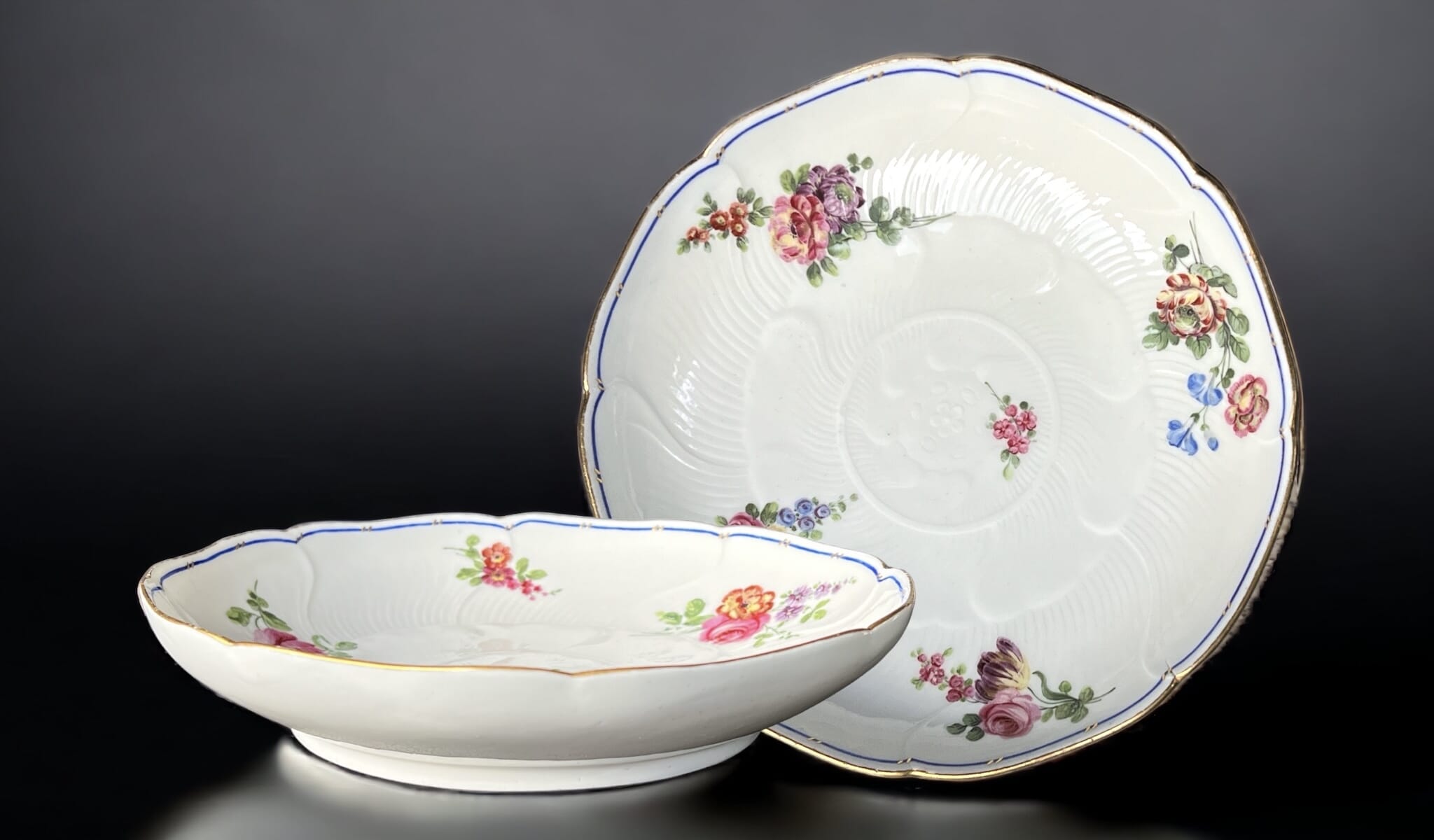
There’s a splendid pair of Sèvres dishes fresh to Moorabool.
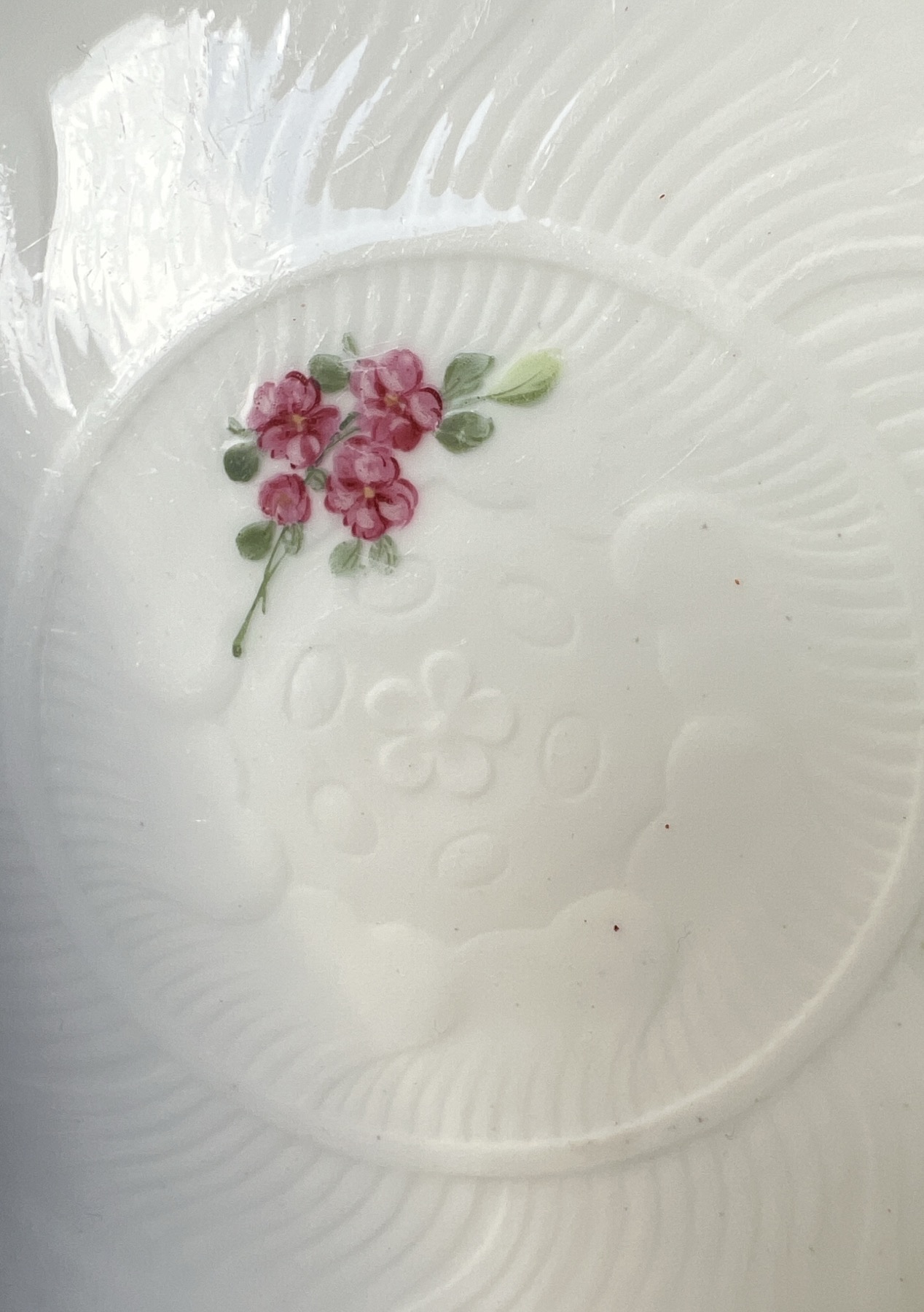
This shape is a compotier rond, and was a component of the large services, used alongside other shaped serving dishes in the centre of the table. A setting for a dozen might have two compotier rond, while the larger services, such as the massive Service Camaïeu Carmen de Fontainebleau (used by the Royal Family) had several dozen of this elegant dishes available.
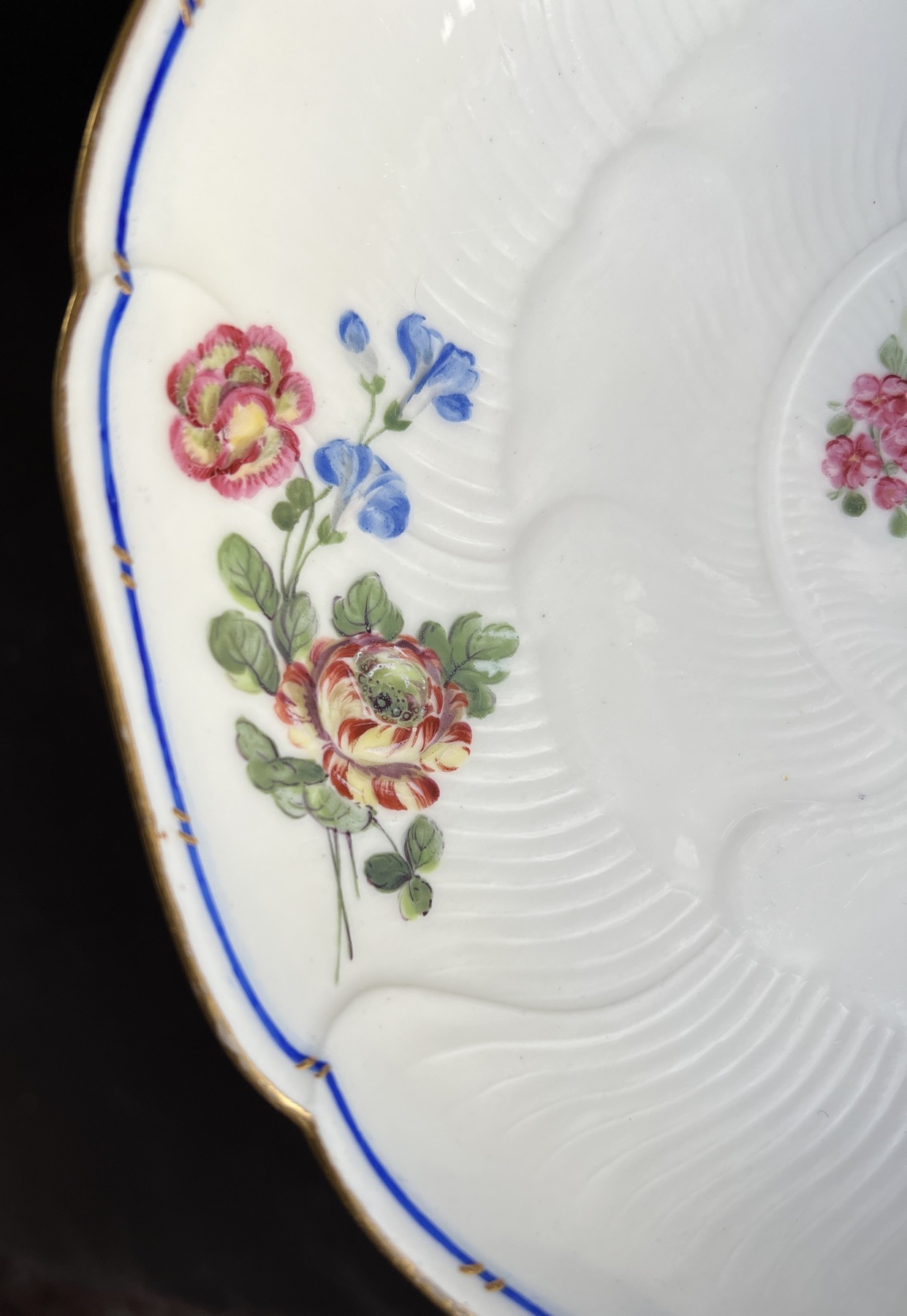
The moulded pattern allows the beauty of the moulded porcelain to show in a way the more painted patterns cannot.
The elegant lotus flower design is borrowed from Chinese Export origins, where lotus-moulded dishes were a common sight in the early 18th century.
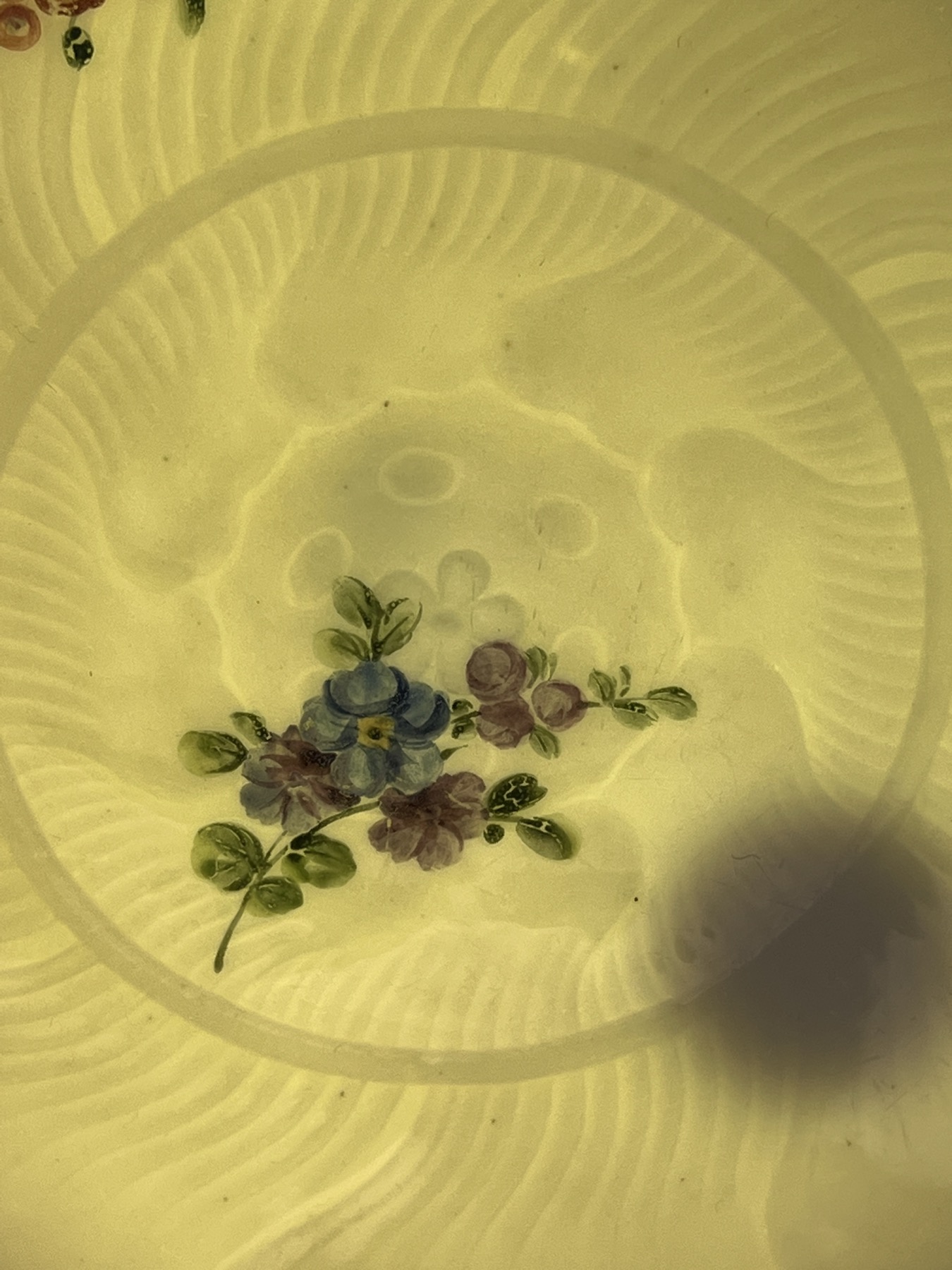
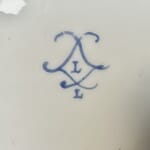
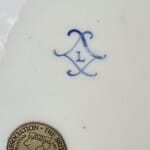
One of the dishes simply has the crossed ‘L’s’ mark, enclosing the date letter ‘L’ for 1764. The other example is the same, but also has a painter’s mark: ‘L’. This allows us to put a name on the painter of the flowers: Louis-Françoise Lécot . He appears in the factory wages lists in 1763, after possible earlier unpaid work as a pupil from about 1761. He worked as a flower painter in 1764 – but is then absent from any reference the following year, giving him the working period 1763-4…. a perfect match for this dish. He does re-appear, after spending 6 years somewhere else, when he is documented as a hard-paste artist in 1771 (as opposed to the soft-paste that was the only body available at Sèvres in the 1760’s). His work is then remarkable and distinct, specialising in dramatic imitation lacquer pieces, with gilt or platinum/silver chinoiseries painted in the highest Rococo manner, or the exotic ‘Etruscan’ grotesques inspired by discoveries in Italy during the 1770’s.
These styles were the latest fashion for the French aristocrats, and bring to mind the lavish productions of the high-end Paris firms competing with Sèvres for the top-end customers. As Sèvres was the King’s factory, he enforced a monopoly on the industry, where colours & gilt decoration was exclusive to his own factory; the loop-hole found by eager factory owners was to attract an aristocratic patron to protect them – Clignancourt was under the protection of the Comet de Provenance (the future Louis XVIII) and Rue Thiroux was under the protection of the Queen, Marie Antoinette. Both produced very high quality hard-paste products in the 1770’s, and would have eagerly employed a Sèvres-trained artist such as Lécot. Locré & Russinger, otherwise known as La Courtille, was another such factory, minus the aristocratic protection; they ran afoul of the King’s Sèvres monopoly, with 2,000 pieces of illegal coloured & gilt porcelain being seized in 1780 – indicating they were producing a large amount of high quality hard-paste wares. Despite this set-back, they continued to make superbly decorated pieces as if nothing had happened….
Could Lécot have spent his time in some such Paris porcelain manufacture, learning the technique for decorating the hard-paste porcelain body? While he was away, Sèvres purchased the recipe for pâte tendre (hard paste) from Pierre-Antoine Hannong, the youngest son of Paul-Antoine Hannong, whose father had established the faience works in Strasbourg in the early 18th century . As often happens with generations, Paul-Antoine made a success of the firm when he introduced the first hard-paste porcelain production in France, in the mid-1750’s. He died in 1769, and his son, Pierre-Antoine became head. Two years later, he sold the secret of Hard-Paste to the Sèvres factory. They took a while, but once the right ingredients were sourced, Hard-Paste was made (alongside Soft-Paste) from the mid 1770’s onward.

When he returned in 1771, Lécot was able to paint on the new Hard-Paste body. He worked on some truly impressive hard-paste orders, and all major collections seem to feature his dramatic 1780’s Chinoiseries. This early example of his Soft-Paste work from his brief appearance at Sèvres in 1763-4 is a lovely rarity.
ref. Rosalind Savill, The Wallace Collection Catalogue of Sèvres Porcelain, London, 1988, Vol. III, pp. 1043-4 for more on Leçot.
Jean Bouchet, active at Sèvres 1757-93
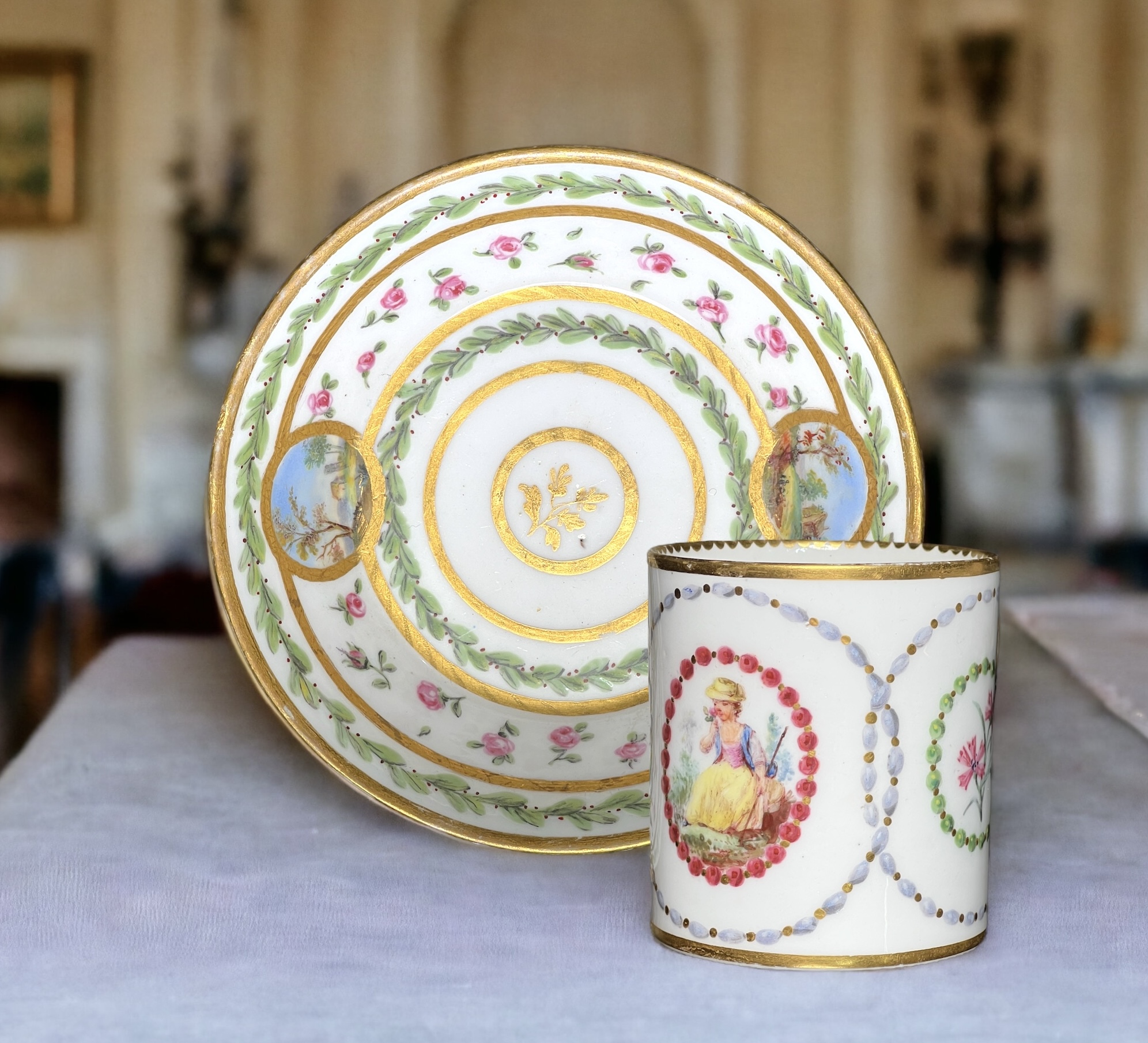
This lovely cup and saucer are a ‘recently married’ pair. While the saucer has been in the Rosenberg Reference Collection in Geelong for a while as a fine example of Sèvres, the cup is a recent acquisition; remarkably, it is the same artist at work at Sèvres in the same year, 1781. While there is a difference in the details, the overall harmony makes them a delightful rarity. And of course, they have a story to tell…..











The artist is Jean Bouchet. He used a pictorial mark, a ‘tree’. While in the factory records – and the subsequent publications that used this as their source for what the marks looked like – he carefully drew a realistic tree with roots, trunk and layered foliage, while in practice he simplified it into something that looks like a furry lollypop…. This would have taken much less time & concentration!
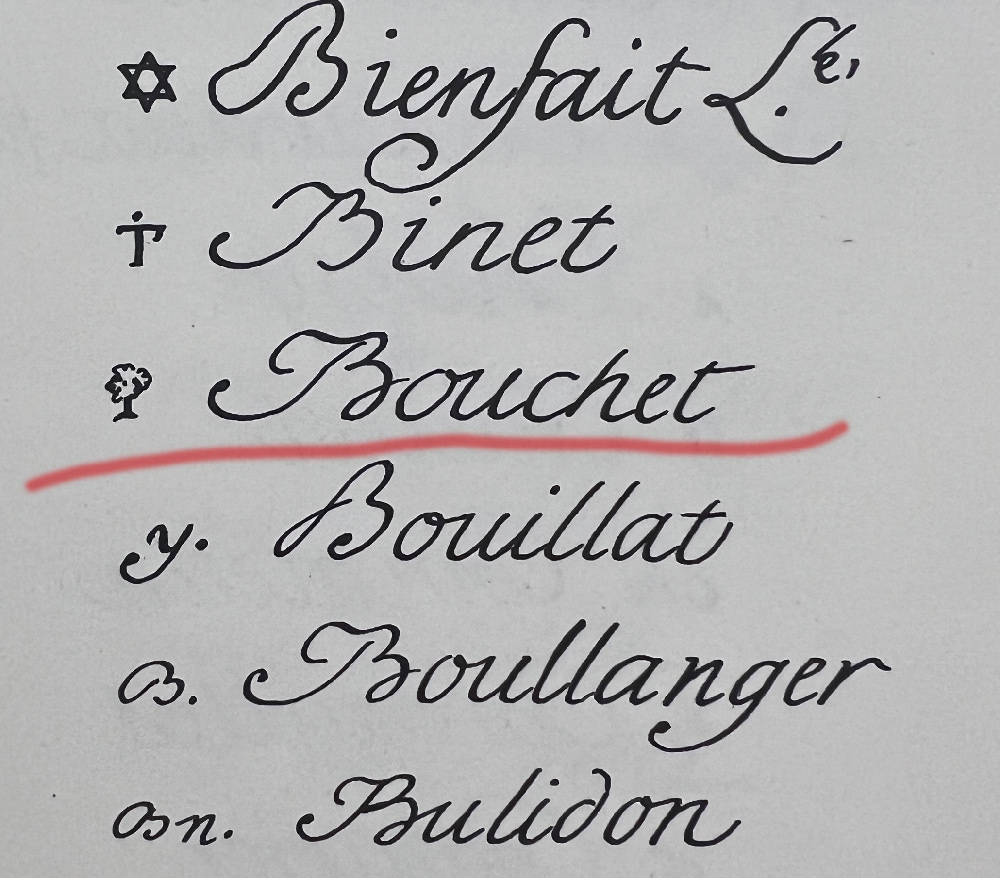


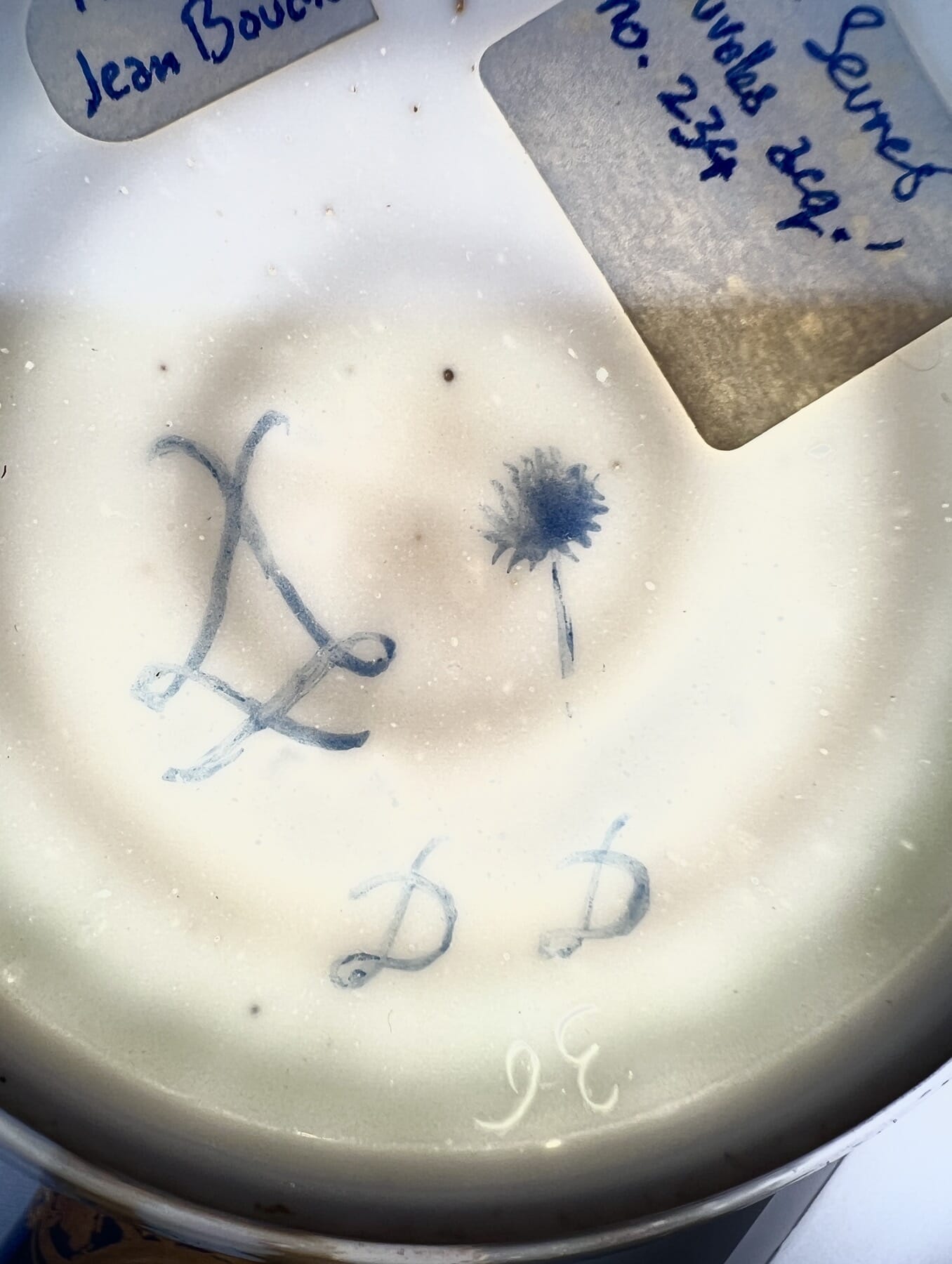
The cup and the saucer are both 1781, dated with the same ‘DD’ in a distinct cursive script, the hand-writing of Jean Bouchet; there is also his distinct mark, a tree symbol. He is recorded as active at Sèvres 1763-93, a painter of human figures, landscapes, and flowers. He is very well represented in major collections, with his small landscapes being very appealing to original customers and present-day connoisseurs alike.

The cup has another painter’s mark also – ‘IN’, the mark of Jean Chauvaux jeune, a gilder active 1765-1802. As there is not a great deal of gilding on the cup, we would suggest he was responsible for the unusual ‘bead necklace’ painting of the borders, where they are given highlights & shadows to make them appear rounded.
The incised workman’s marks 36 & 48a are both recorded by Saville in the Wallace Collection’s catalogue, vol III pp1130&1133. ’36’ is recorded 1770-90’s, while ’48a’ is recorded 1777-92. There are no names associated with these individuals.
In the British Royal Collection, both ’36’ and ’48a’ are present in several assemblages, including a set of very similar cups & saucers from the same period.
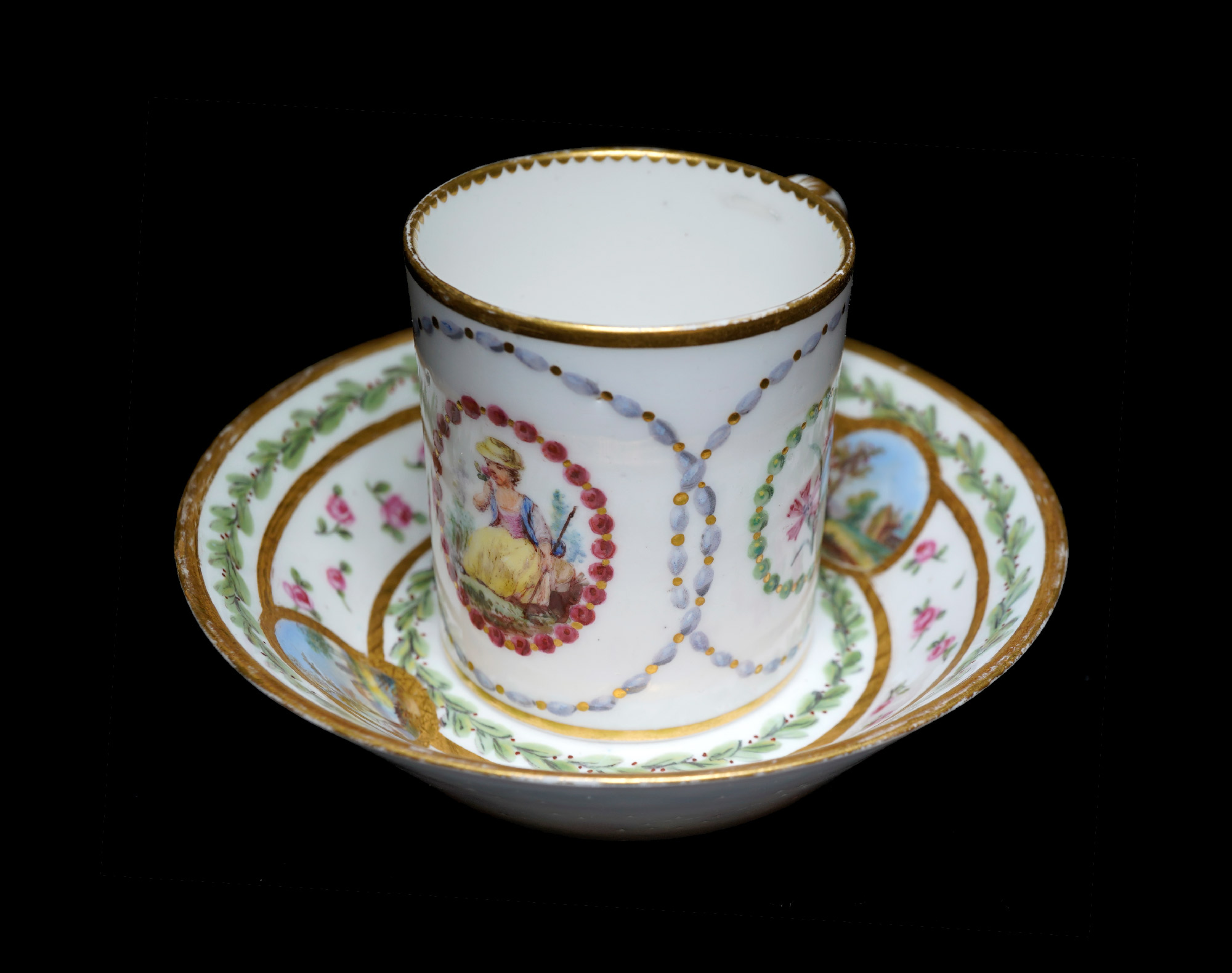
A complete déjeuner by Jean Bouchet, in the V&A Museum, London
It’s rare to see a complete group of porcelain from this era still together. This set in the Victoria & Albert Museum, South Kensington, is a fascinating rarity to study. It was bequeathed to the museum in 2015, and leading expert Rosalind Savill has identified it as one of four déjeuners bought by Christian IV, Duke of Zweibrücken, on the 14th June 1775. This was just 3 days after the event of the decade in France, the coronation of Louis XVI which the Duke naturally attended. Their cost was 840 livres, the equivalent of tens-of-thousands in today’s currency…. an expensive souvenir!
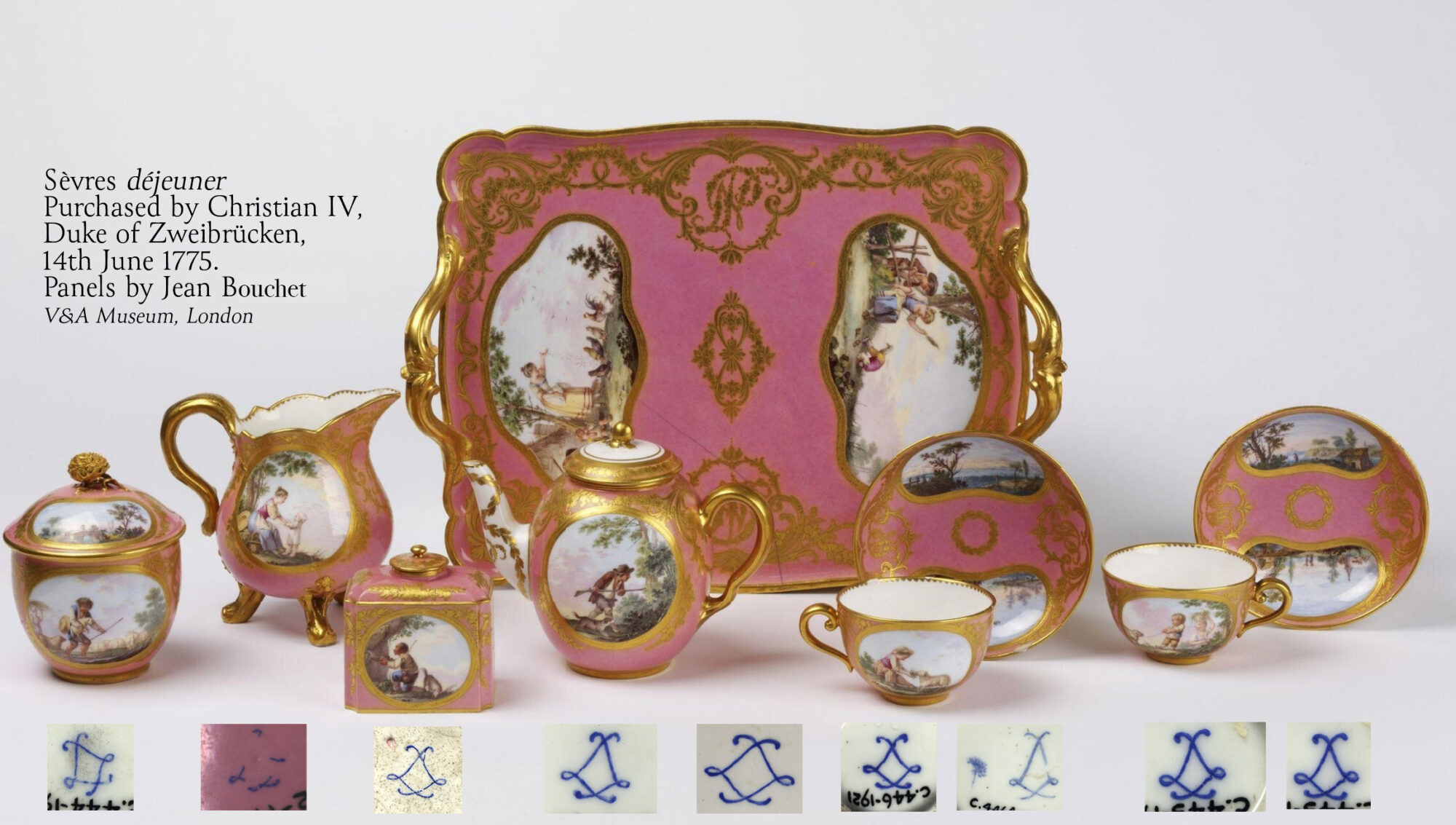

The marks on Sèvres should follow the rules and be very logical, but in practice they can be quite random. The system was there to provide the company with a way of tracking the various production steps and those responsible for the work: in a perfect scenario, the répareur, or workman who puts it all together, incised his particular mark, and both the artist and the gilder would include their mark. Then the factory mark, the crossed ‘L’s’ for Louis were painted, and inside them the code for the year it was decorated.
As you can see in the dejéuner set examples above, this isn’t always the case: of the nine components of the existing set, just a single example has a painter’s mark, here the ‘tree’ of Jean Bouchet, and none have a year mark! It is only the monogram found on the tray, along with the factory records recording Bouchard’s work on the commission, and the solid provenance that allow this remarkable set to be dated. This helps explain the number of non-conforming Sèvres items we come across, which have no date code or artist’s mark. They were quite probably part of a set where only a few items were marked.
Reference: Savill, Rosalind: A Sèvres Porcelain Tea Service in the Victoria and Albert Museum with Surprising Credentials, French Porcelain Society Journal, Vol. II, 2005, pp. 39-46.
Of course, fraud is always a concern, and later-decorated pieces can often be non-conforming – but usually, a date code is part of the deception, with the first years ‘A B C’ for 1754, 55 & 56 being the favourite – the trouble is, the style of decoration & object type was often not yet invented at that date, a dead giveaway!
Our Sèvres Stock
-
 Verrerie de Sèvres Art Nouveau glass claret jug with Viennese silver ‘Blackberry’ mounts by Brüder Franks, c. 1895Sold
Verrerie de Sèvres Art Nouveau glass claret jug with Viennese silver ‘Blackberry’ mounts by Brüder Franks, c. 1895Sold -
 Sevres socketed cup & saucer with birds by Chappuis, 1765$0.00 AUD
Sevres socketed cup & saucer with birds by Chappuis, 1765$0.00 AUD -
 Sèvres cup & a saucer, superb scenic panels by Jean Bouchet, dated 1781$3,300.00 AUD
Sèvres cup & a saucer, superb scenic panels by Jean Bouchet, dated 1781$3,300.00 AUD -
 Sevres plate, flowers & blue scroll, hardpaste c. 1780$1,250.00 AUD
Sevres plate, flowers & blue scroll, hardpaste c. 1780$1,250.00 AUD -
 Sevres plate, scattered flowers by Ambroise Michel, 1777$1,480.00 AUD
Sevres plate, scattered flowers by Ambroise Michel, 1777$1,480.00 AUD

